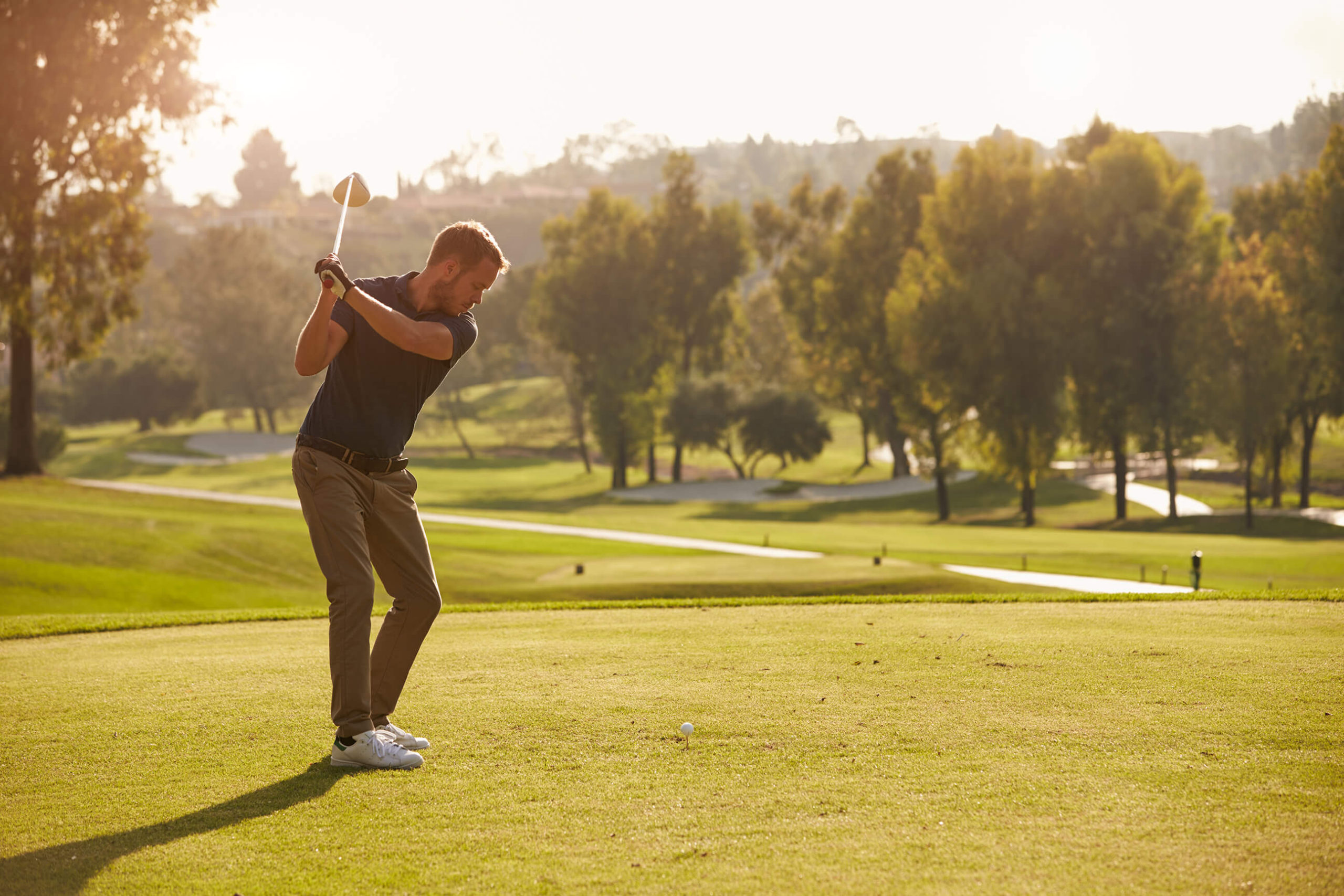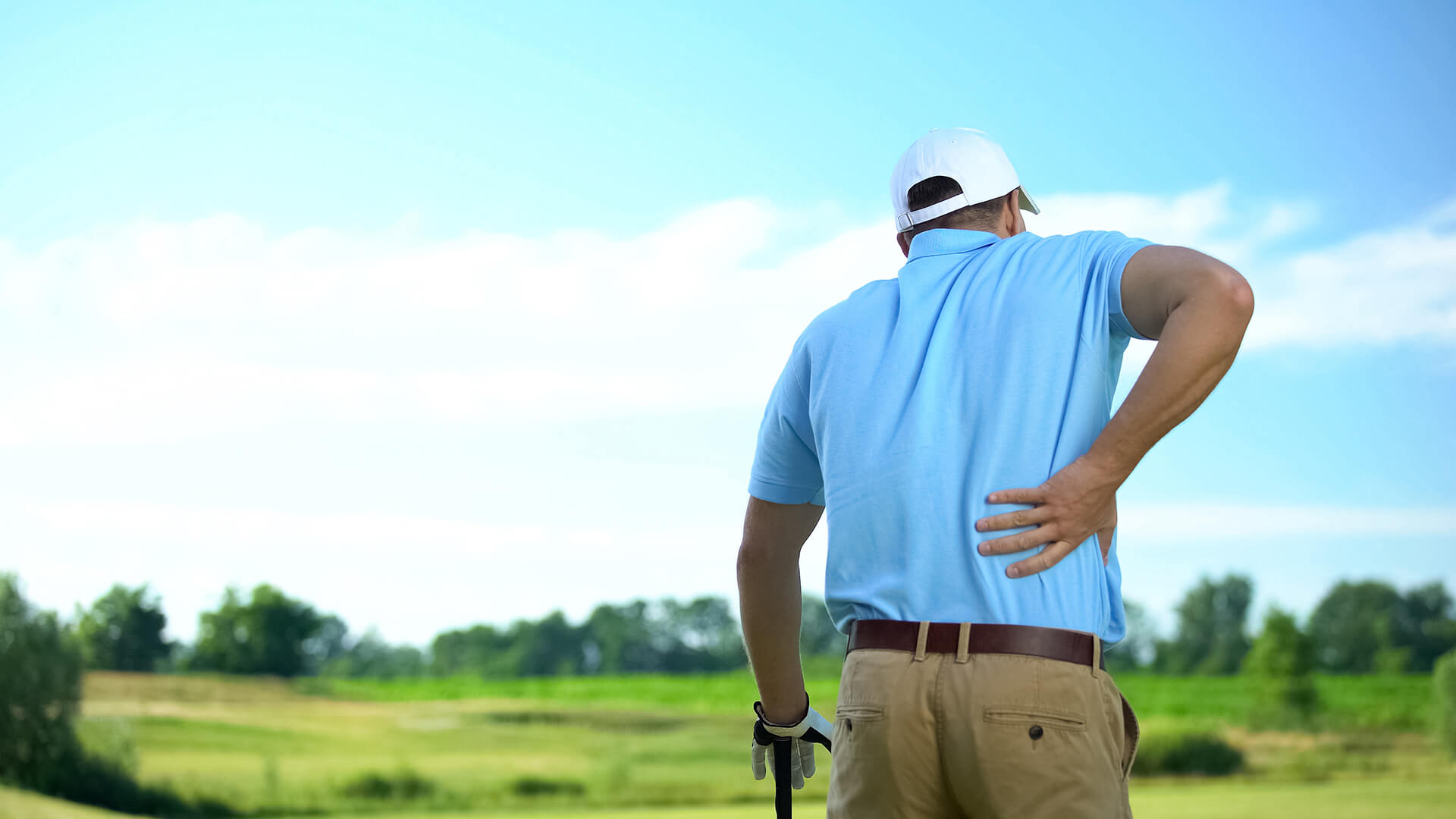
The golf swing
The golf swing is a complex movement pattern which relies on the coordination of all the body’s joints and muscles as well as balance and timing. Because of the length of the club, little variations in the movement are heightened causing greater changes in the clubface trajectory. Due to this reason, a small dysfunction in movement pattern can lead to large disturbances in performance. If one area is not working to the best of its abilities this causes overload which can lead to a decrease in performance and an increased risk of injury. However, osteopathy helps assist the body return to its normal function.
Osteopathy & golf
Osteopaths see the body as a unit, we do not see the body as individual ‘parts’ in isolation, but as connected parts, working as a whole.
For example, a patient may present with mid-spine pain, this may be the result of tight pectoral muscles causing the shoulders to protract, causing muscles covering the upper back to be on stretch and therefore reducing movement of the mid-spine. Osteopaths look at the whole chain involved in the golf swing.
Osteopathic aims for treating golfers:
- Injury prevention
- Rehabilitation & recovery of existing injury
- Optimise performance
Neck (Cervical Spine)
A golfer needs good neck rotation and stability to help keep good eye-to-ball contact during the swing. A protracted head-stuck forward neck, can alter and emphasize the natural curvature of the neck which can reduce movement and increase the risk of neck pain. A restriction within the individual joints will disturb the overall movement of the neck and cause pain. Position is everything!
Upper & mid back (Thoracic Spine)
Trunk rotation is a fundamental part of the golf swing. The thoracic spine is responsible for the majority of overall trunk movement. Restrictions found here can lead to over-exertion above and below, shortening swing length, or reducing its efficiency. This can create an imbalance where other joints become more mobile compensating, this decreases the swing fluidity which can reduce accuracy and consistency.

Lower back (Lumbar Spine)
With the golf swing ending with extension of the lower back, this is a common site of complaint. Control and strength of the abdominal muscles help prevent hyperextension-arching, of the lower back.
Hips
Hip rotation is important during the follow through of the swing. Restrictions in this area can lead to extra forces being placed in the lower back or knee causing them to experience extra strains and stresses.
Wrist
Another common injury site in golfers is the lead wrist. The club grip requires good wrist and elbow bones movement-ulnar and radial deviation of the wrist and thumb, as well good strength and control of the muscles helping to prevent excessive force and movement.
Osteopathic treatment:
Osteopathy is a gentle, hands-on treatment involving a combination of techniques depending on your needs. As well as hands-on treatment, exercise prescription and advice is given to help increase strength, mobility, balance and proprioception.
As a golfer you should consider osteopathy if you wish to:
- Recover from injury
- Prevent Injury
- Optimise biomechanical movement and control in order to improve performance